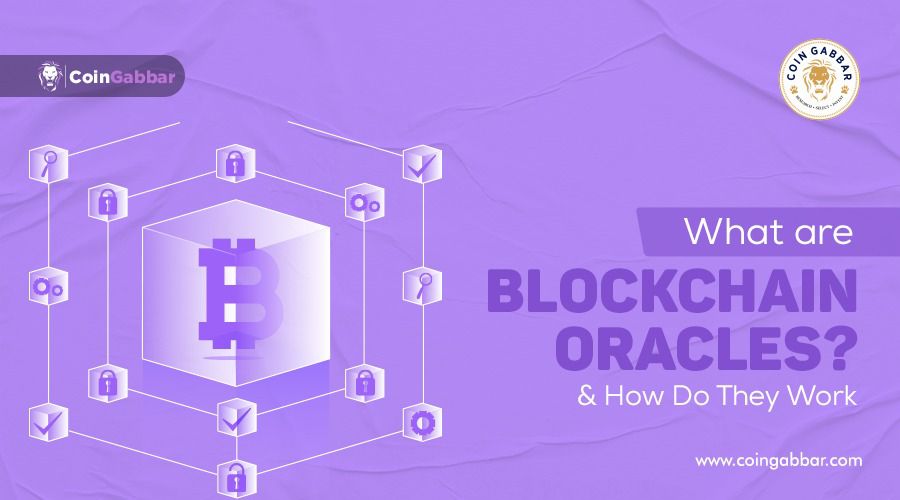
Blockchain, commonly referred to as a decentralized digital ledger, eliminates the need for third parties to verify transactions, providing users with the best standards of security, transparency, and immutability. Some blockchains also support "smart contracts," which are automated computer programs used to carry out any contract when predetermined conditions are met.
The validation of transactions is based on on-chain data and is often carried out by the nodes in the network by reaching a consensus. However, many blockchain projects require constant interaction with external sources of information. For smart contracts to have real-world applications, blockchains and on-chain smart contracts must be able to use external, off-chain data.
For example, if you want to buy a car with cryptocurrency, you can create a basic smart contract. The contract will look something like this: "If party X sends the required amount of funds to party Y, the ownership of the car is transferred from party X to party Y." The smart contract is executed irreversibly if these required conditions are met.
Off-chain data that is required in the above example of a car transaction could be proof of successful payment or proof of receipt of the ownership. Because blockchains are isolated systems, oracles come into play here. Let’s have a detailed look at them.
What are Blockchain Oracles?
Blockchain Oracles are third-party services that help blockchains or smart contracts interact with outside data (off-chain data). Outside data must be communicated to the closed blockchain system in many cases, particularly when smart contracts are linked to real-world events. Oracles work as a bridge between on-chain and off-chain data.
Oracles are crucial elements of the blockchain ecosystem because they expand the range of use cases for smart contracts. Smart contracts would be ineffective without blockchain oracles since they could only access data within their networks.
For more clarity, the blockchain oracle is not the data source itself but rather the layer that queries, verifies, and authenticates external data sources before relaying that information. They can also be viewed as an application programming interface (API) for a blockchain to the outside world.
Oracle data can take many forms, such as price information, the successful completion of a payment, or the temperature measured by a sensor. There are numerous types of oracles, and how an oracle operates is entirely dependent on its intended use.
The basic workflow of an oracle begins with the smart contract of a blockchain sending a data request to Oracle. An oracle is typically a hybrid smart contract composed of some on-chain and some off-chain components.
The on-chain contract receives data requests from other smart contracts and forwards them to the off-chain components (called Oracle nodes). This Oracle node query verifies and authenticates data sources, whether via APIs, SDKs (Software Development Kits), or other sources. After that, the authenticated data is used to validate a smart contract.
Based on trust, is it centralized or decentralized?
Based on the source, does the data originate from software or hardware?
Based on the direction of information, is it inbound or outbound?
A single oracle can be classified into multiple categories. Let’s see some of these categories.
In centralized oracles, a single entity or group manages and serves as the smart contract's primary source of information. Using only one source of information might be dangerous; the contract's validity is dependent on the party holding the oracle. The presence of a single point of failure renders contracts more vulnerable to attacks.
Decentralized oracles involve multiple network users to reach an agreement before creating smart contracts. They also have many different data sources. They are comparable to a trustless blockchain network, which means that they do not completely eliminate trust but rather distribute it among many participants.
Software oracles interact with online data sources. This data can come from online databases, servers, websites, or any other data source on the Internet. Exchange rates, digital asset prices, and real-time flight information are examples of information typically provided by software oracles.
A hardware oracle "translates" real-world events into digital values that smart contracts can understand. Hardware oracles collect data from the physical world and make it available to smart contracts. This data could be relayed by electronic sensors, barcode scanners, and other data-reading devices.
Inbound oracles deliver data from external sources to smart contracts. They are the entity in charge of the oracle. These are perhaps the most useful type of oracles since they assist in the use of real-world situations and external data to influence how a blockchain operates.
Outbound oracles convey data from smart contracts to the outside world. These oracles instruct other systems to perform tasks and take actions based on information from the blockchain.
Blockchains are used in a system to increase trust and transparency among parties that interact. As previously said, blockchains do not have access to real-world data, thus any data provided by an oracle must be accurate and trustworthy. Smart contracts make choices based on data given by oracles.
The major problem with developing oracles is that if the oracle is compromised, so is the smart contract that relies on it. This is commonly known as the "Oracle Problem." It is concerned with the trustworthiness, safety, and dependability of Oracle networks, as well as the degree of decentralization.
Oracles, because they are not part of the primary blockchain mechanism, are not part of the security procedures that public blockchains may provide. The trust problem between third-party oracles and trustless smart contract execution remains mostly unresolved.
However, decentralized oracles have the capacity to create safety mechanisms that have the potential to remove a significant amount of systemic risk from the blockchain ecosystem.
As a result of their built-in functionality, blockchains cannot draw data from or send data to any other system. Oracles bring another prospect of interoperability to blockchains. They are very important for the better functioning of many upcoming and running Web 3.0 projects.
A dependable system for communicating between smart contracts and the outside world is critical to the widespread adoption of blockchains. Without blockchain oracles, smart contracts would be forced to depend solely on information already present in their networks, severely limiting their possibilities.
Blockchain oracles continue to be one of the fundamental building blocks required for the blockchain ecosystem to thrive in a safe, dependable, and trustless way.

Mona Porwal is an experienced crypto writer with two years in blockchain and digital currencies. She simplifies complex topics, making crypto easy for everyone to understand. Whether it’s Bitcoin, altcoins, NFTs, or DeFi, Mona explains the latest trends in a clear and concise way. She stays updated on market news, price movements, and emerging developments to provide valuable insights. Her articles help both beginners and experienced investors navigate the ever-evolving crypto space. Mona strongly believes in blockchain’s future and its impact on global finance.
7 months ago
Latest in crypto technology

2 years ago
THE COMMUNITY TEAM HIGHLY RECOMMENDS AND VERIFIED MRS KAREN TOMPSOM AS THE ONLY PROFESSIONAL TRADER TO AID YOU IN ALL TRADING RELATED ISSUES,,WRITE TO HER ON INST💹AG*RAM@{KARENTOMPSOM}
